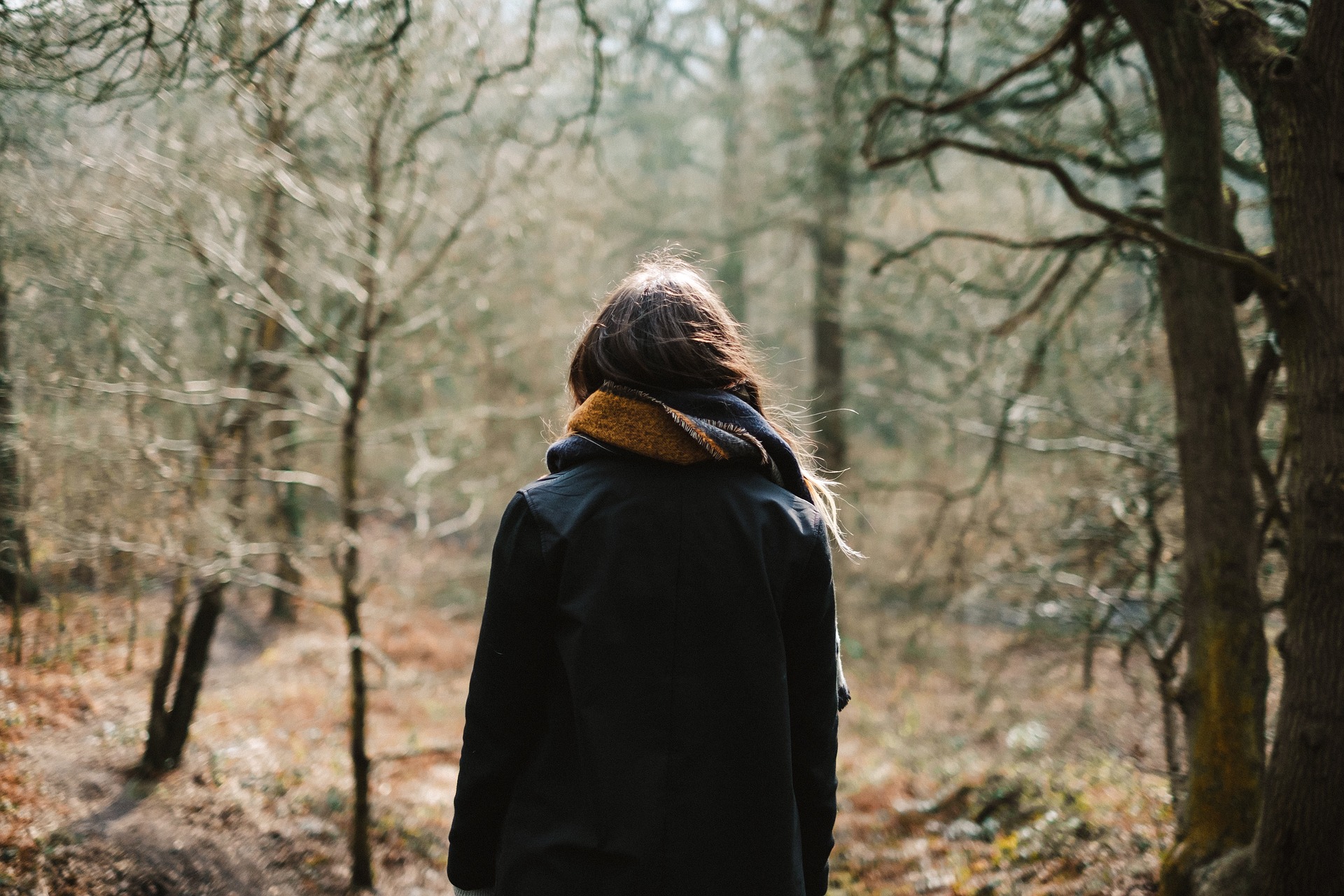
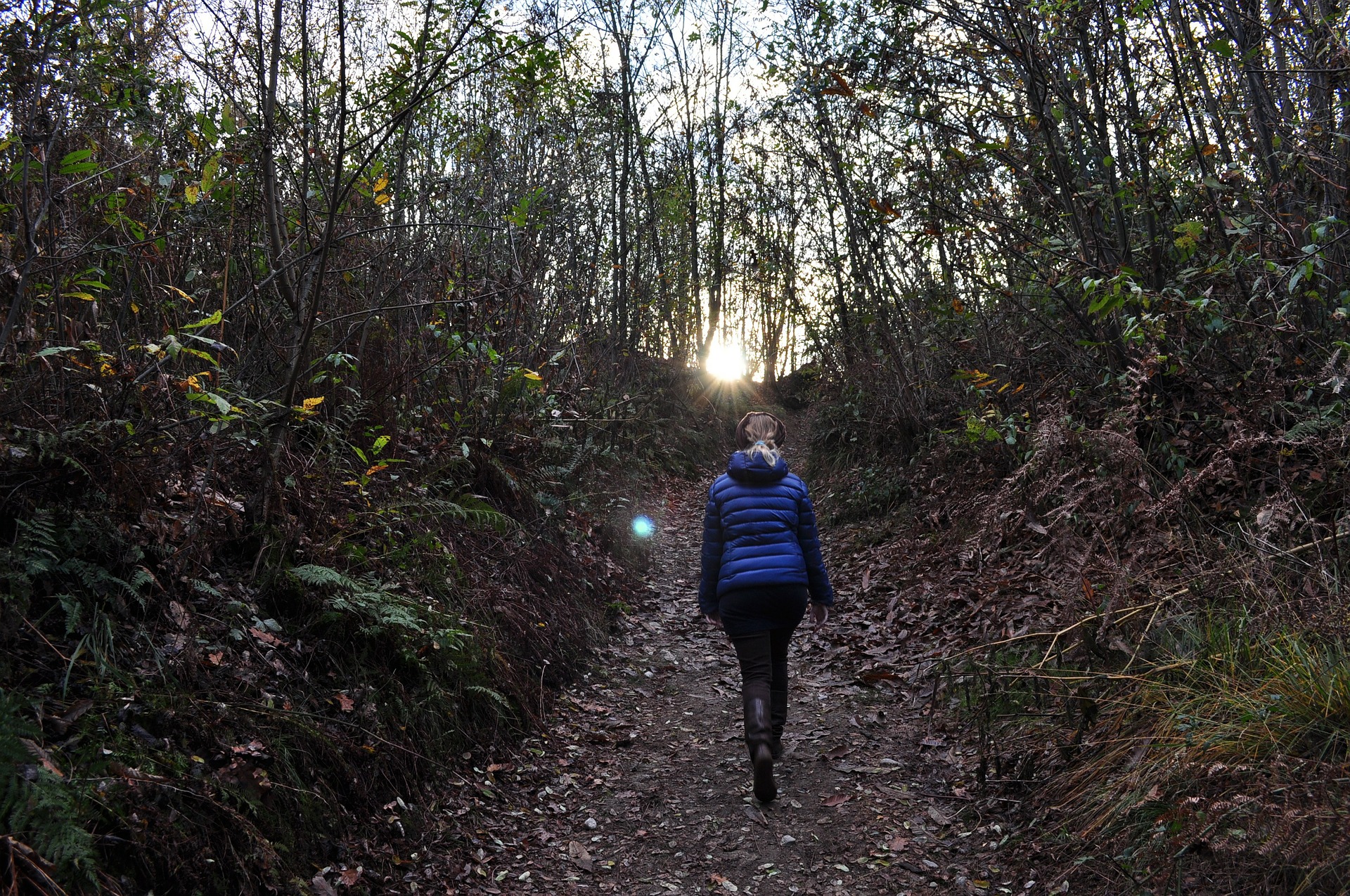
Sometimes, I wonder what fuels my desire to be alone. Did I always feel this need to be alone? Is this preference a result of being the youngest kid in a big family with older parents? Is that need for solitude from nature, nurture, or a combination of both? I do know that if left alone for too long, the contentment can evolve into loneliness, so there’s definitely a balancing act. And there’s something specific that happens when I am alone in nature, or when I even see images of people alone in nature. Such images can provide moments of calm for me, especially when a figure is dwarfed in size by a panorama or massive landscape view. For whatever reason, I feel soothed by the being made to feel small & insignificant, as I’m more mindful that whatever stress or life hurdle I’m facing could be seen from another perspective.
The angle, lens, distance, illumination–all these things can dramatically shift the viewpoint.
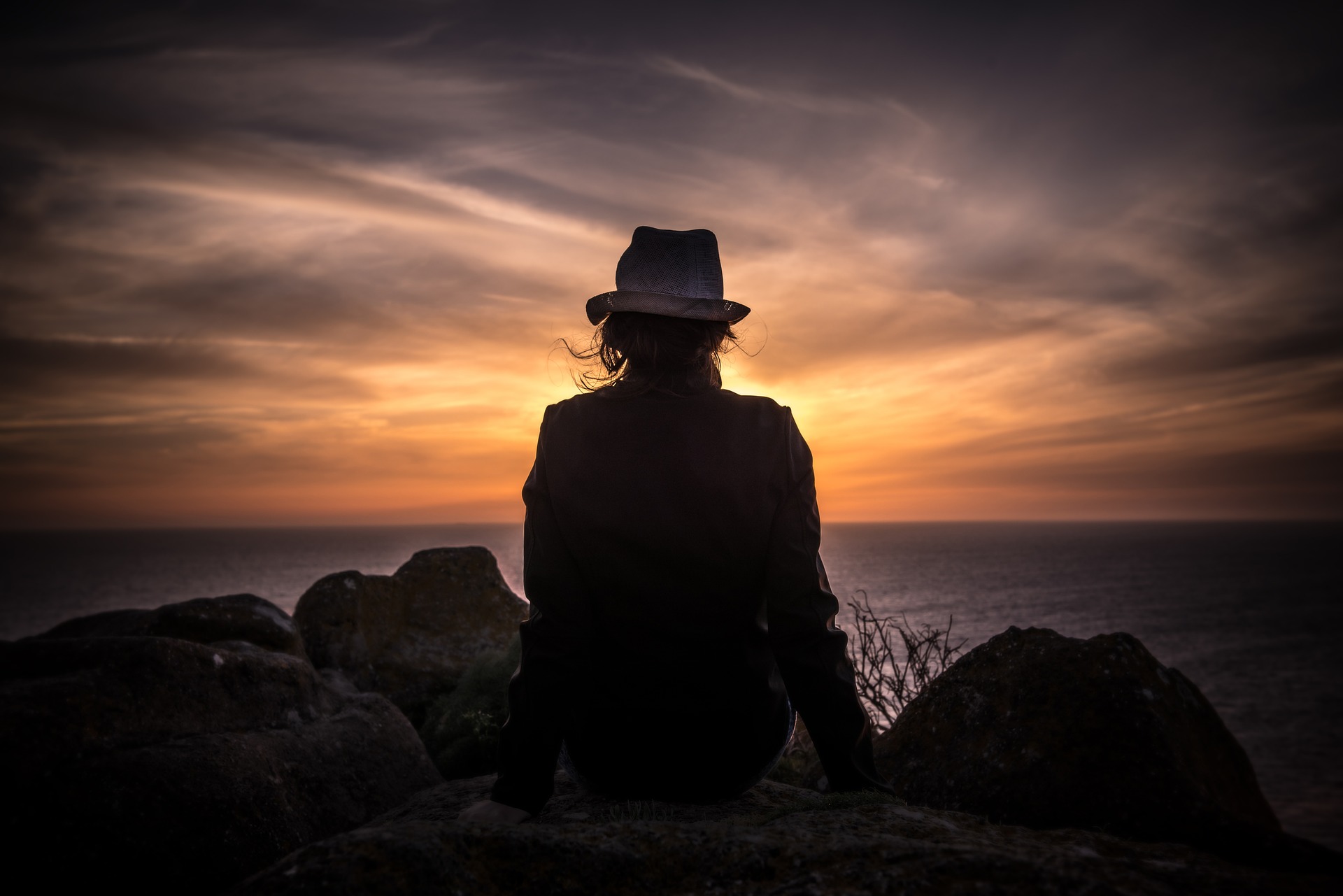
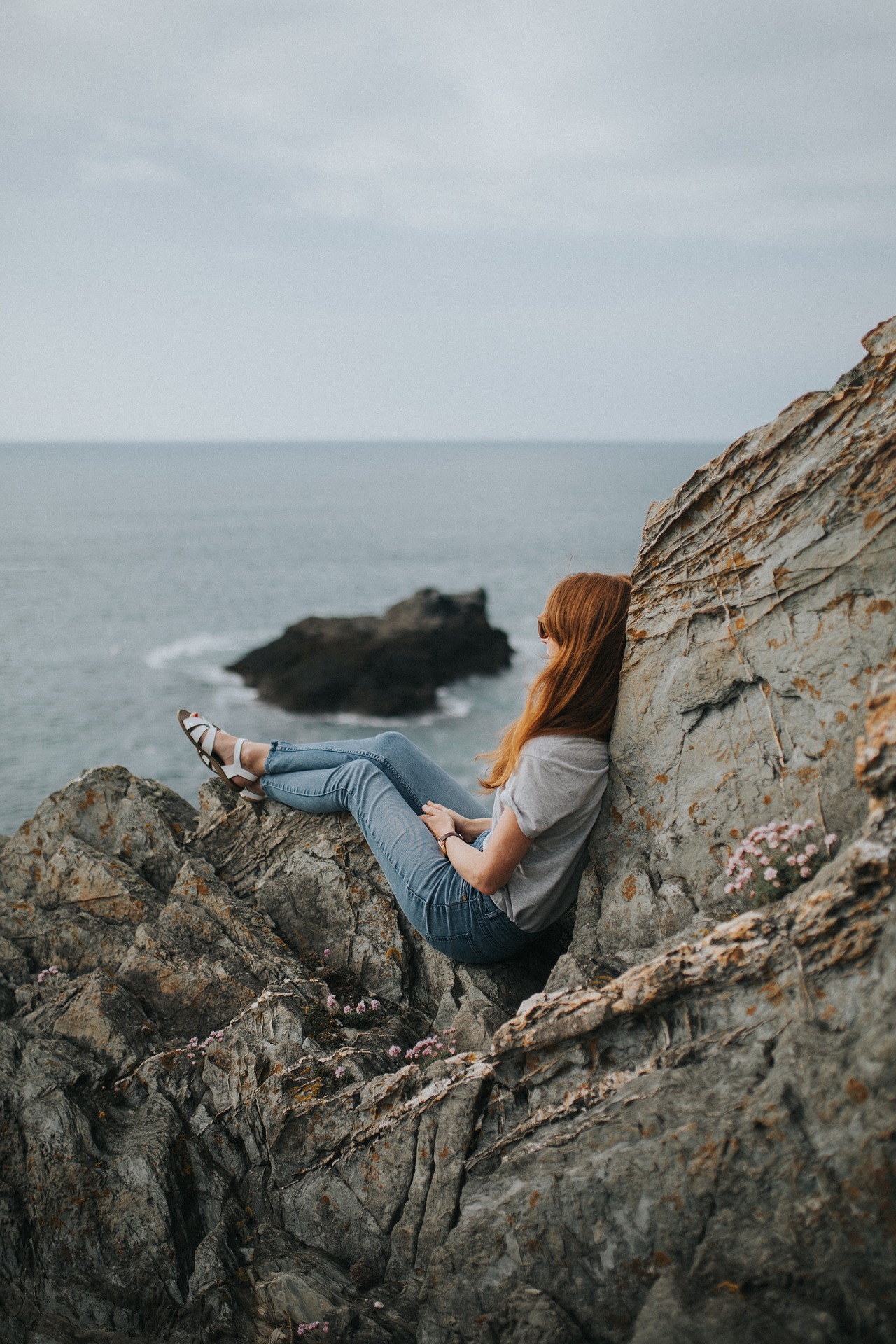
As a child in New Hampshire, walking home from school through the woods provided me with regular periods of time spent in nature alone. You could say I was a bit of a dilly-dallier, taking my time to imagine stories, often fantastical since I loved fairy tales, in which I would find adventure. When I lived in Rockport, Massachusetts, I loved the walks to the Headlands (as you may have read from other blog posts I’ve shared) which allowed me similar periods of solitude & whimsy, dreaming spaces where my lively interior life common to introvert children glowed brightly in Technicolor. The quiet offered by these walks enhanced the experience, listening to the wind & its effect on waves & the shoreline or leaves & trees in the woods.
Could part of the romanticizing of youth be that adult valuing of those small gifts of unplanned time when those of us as kids were allowed to ramble, mosey, poke through, wander, discover, seek out, & explore?
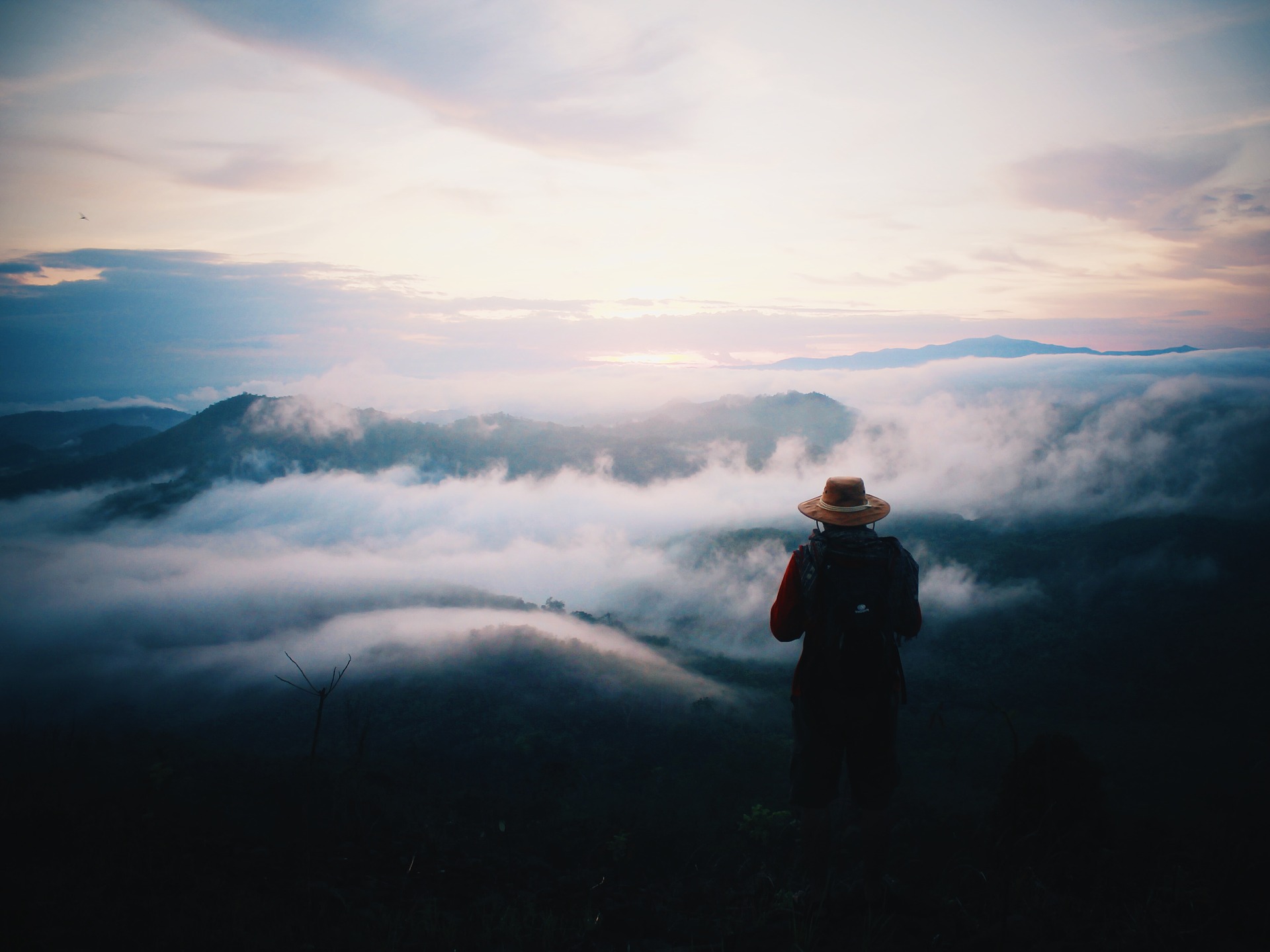
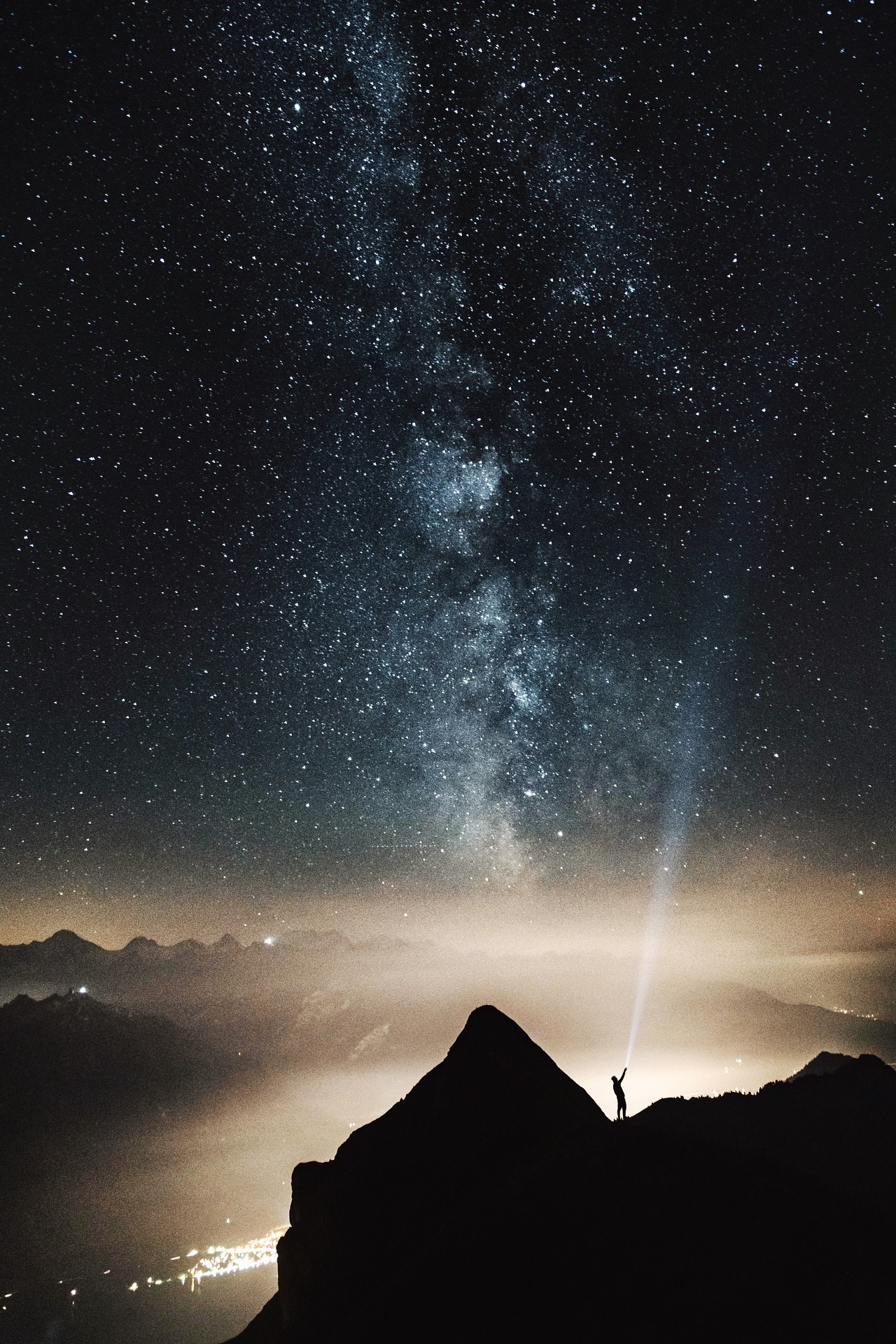
When I think of the “Romancing the Alone,” I think of the ways in which humans have long idealized solitude in undiscovered, undeveloped natural settings. The painting below, Wanderer Above the Sea of Fog by Caspar David Friedrich, certainly surfaces in my mind. One can definitely find a strong recurring theme of the hermit in nature within Romantic works–novels, essays, art, music, & design elements. I remember well how Laura Ingalls Wilder wrote about Pa’s need to periodically move to a new place when neighbors started to approach too closely to where they were living–& that was a ridiculous distance in modern conception measured in tens of miles. Looking back, Pa explained that the wild animals wouldn’t stay on in woods where too many people lived–which made sustaining food supplies a reasonable concern. But little did I think about that as a kid in the way I do now. Today, fear creeps in when I explore too deeply into the woods, as people have become too dependent on things like hospitals, foodstuffs in stores, or even just running, drinkable water.
How is it that the nature that inspired so many has become foreign or dangerous to the contemporary imagination? Films like Everest & Into the Wild, & shows like The Terror or even Alone, demonstrate the kinds of fear, that sublime feeling of beauty & terror at the same time, which the lone person in nature can inspire in today’s minds.
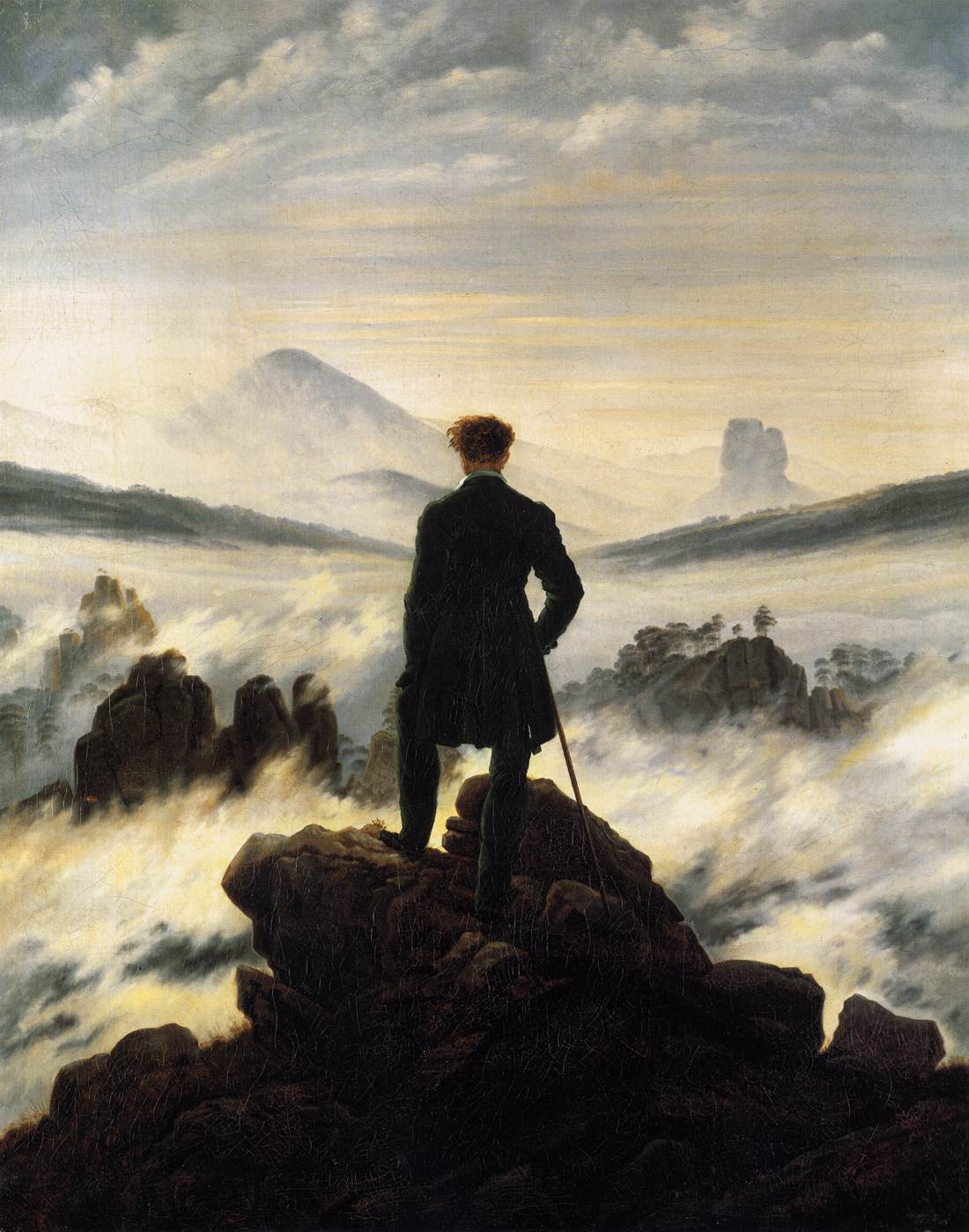
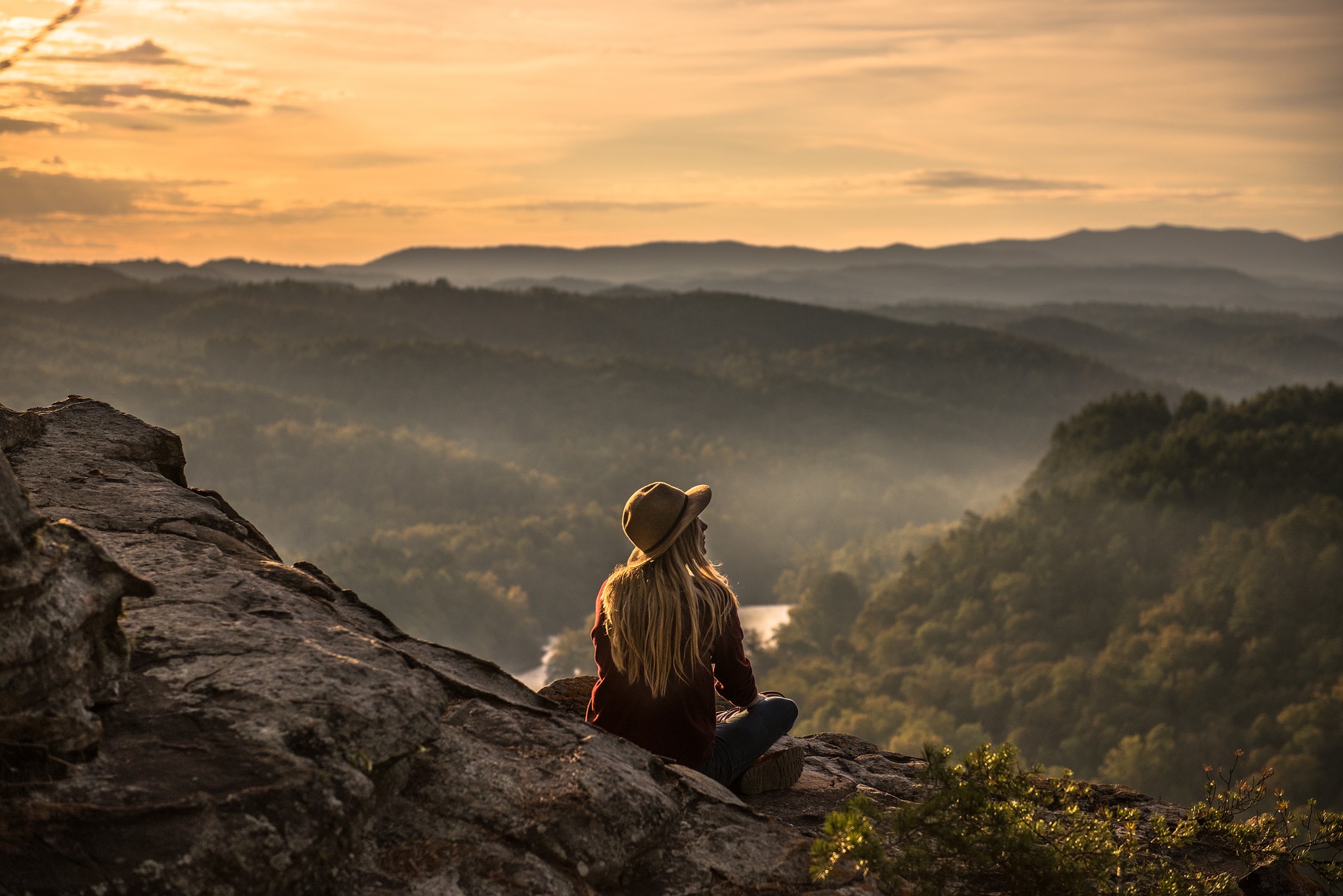
And so these are things I think about quite often, especially as someone who lives in the humanities in what I do & think about for the future. Perhaps it’s the bustle, the population growth, the consumption of resources, the pace of modern work, the increasing automation & expansion of technology–all these things & more–that causes introvert academic folk & writers to prioritize & treasure alone time in nature? Of course, this can be subjective, as I know many introverts who grew up in urban environments may not see expansive vistas of nature in a similar light. For others, a nook in a coffee shop or a granite park bench can offer solitude among the masses, where the expansive view becomes the human landscape, the being awed by something massive might stem from human-made buildings or architecture or art installations or streams of traffic. Urban sounds can replace the natural sounds of wind & waves crashing with the hum of cars, sirens, & crosswalk audio signals.
The idea or concept is the same, but the landscape of the future shifts from organic or natural things like trees, woods, grasses & mosses, & sunshine, to human-made ones like metal, glass, synthetic plastics, & artificial lighting.
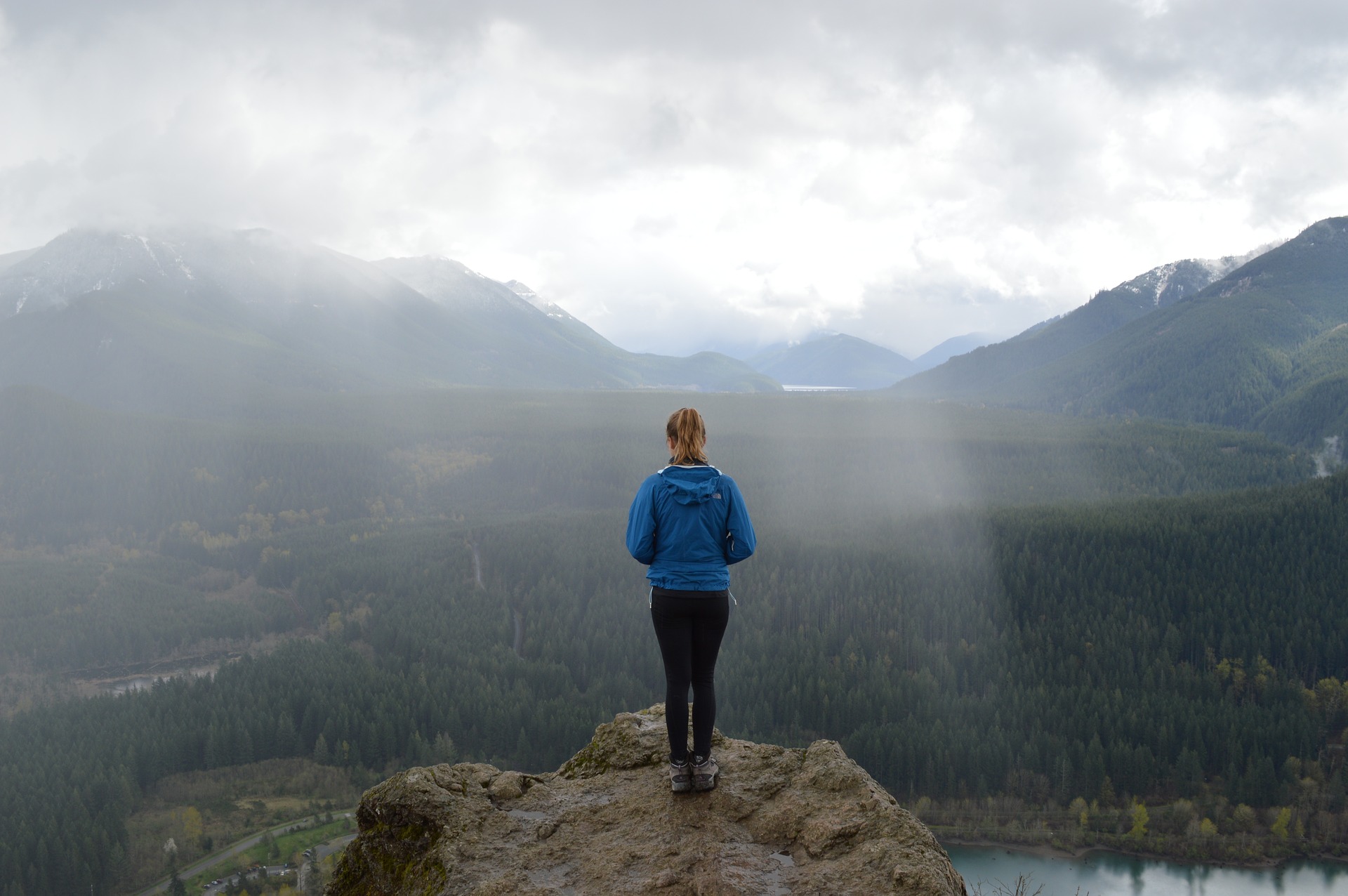
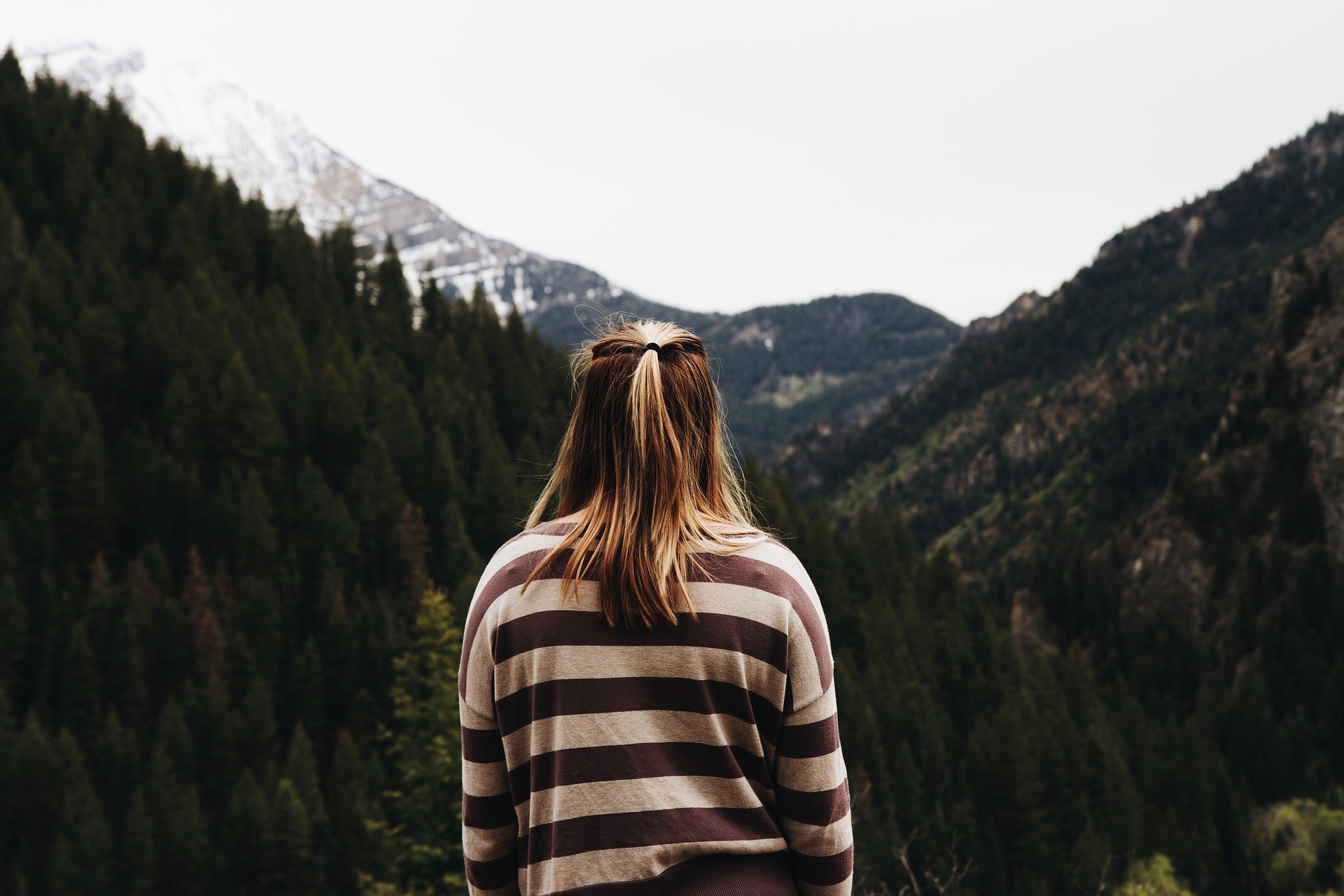
And so you’ll notice a pattern to the images curated from the open source Pixabay for this reverie. (I use my own photography for more specific pieces tied to personal places, people, pets, or settings, & for more academic pieces I’ll use open-access images.) You’ll see that the focus of the pictures are not just the lone humans–often a silhouette or androgynous or a back or outline. Rather, the human figures function within that bigger setting of nature. It’s that interplay of the individual within the landscape–a passive observer or witness–which causes the tension or composition of artistic interest for the eye. And there’s a sense of inner peace gained from gazing upon the images. That feeling would shift or alter with another person present. The intimacy found in that lone relationship between the human & the natural setting, being near something but not necessarily of that something, would fundamentally change. And for the viewer that voyeuristic experience of seeing those intensely private moments that can evoke such deep emotions or revelations would be lost.
A romance of being alone in a space that allows that spark of profound feeling to catch fire–that is also what becomes “Romantic” in the artistic sense. Can that ever be truly shared? I don’t know that I have the answer.
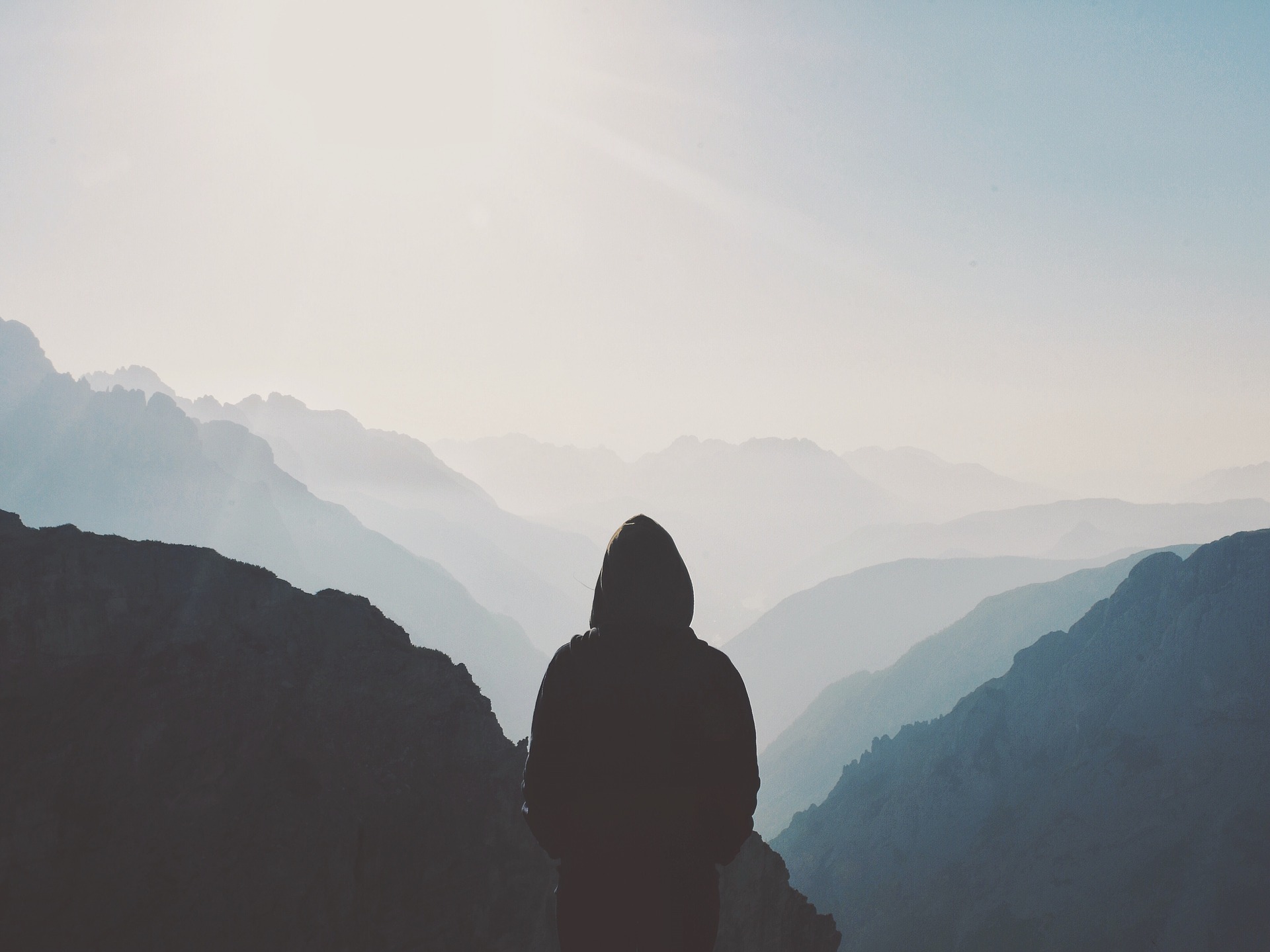
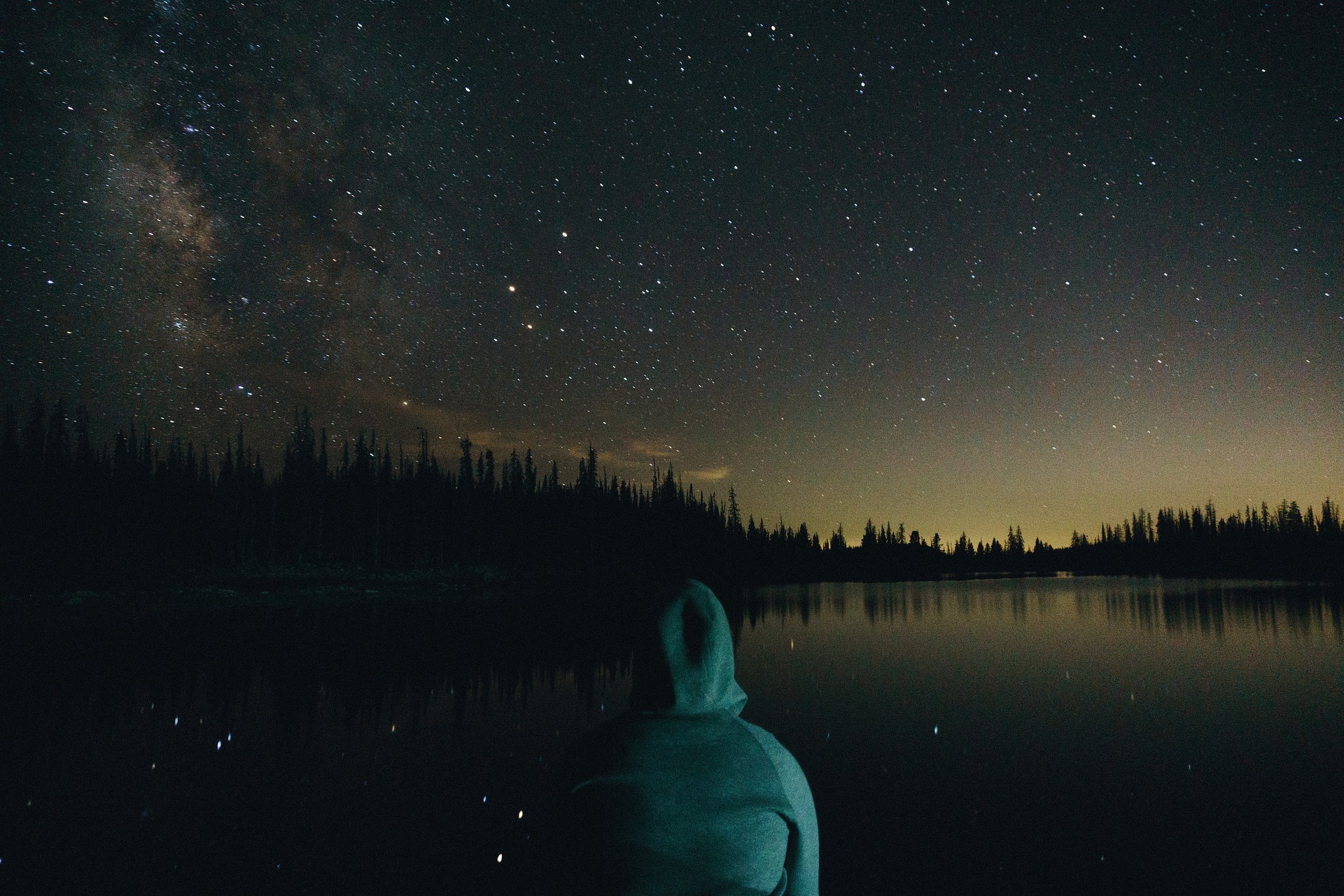
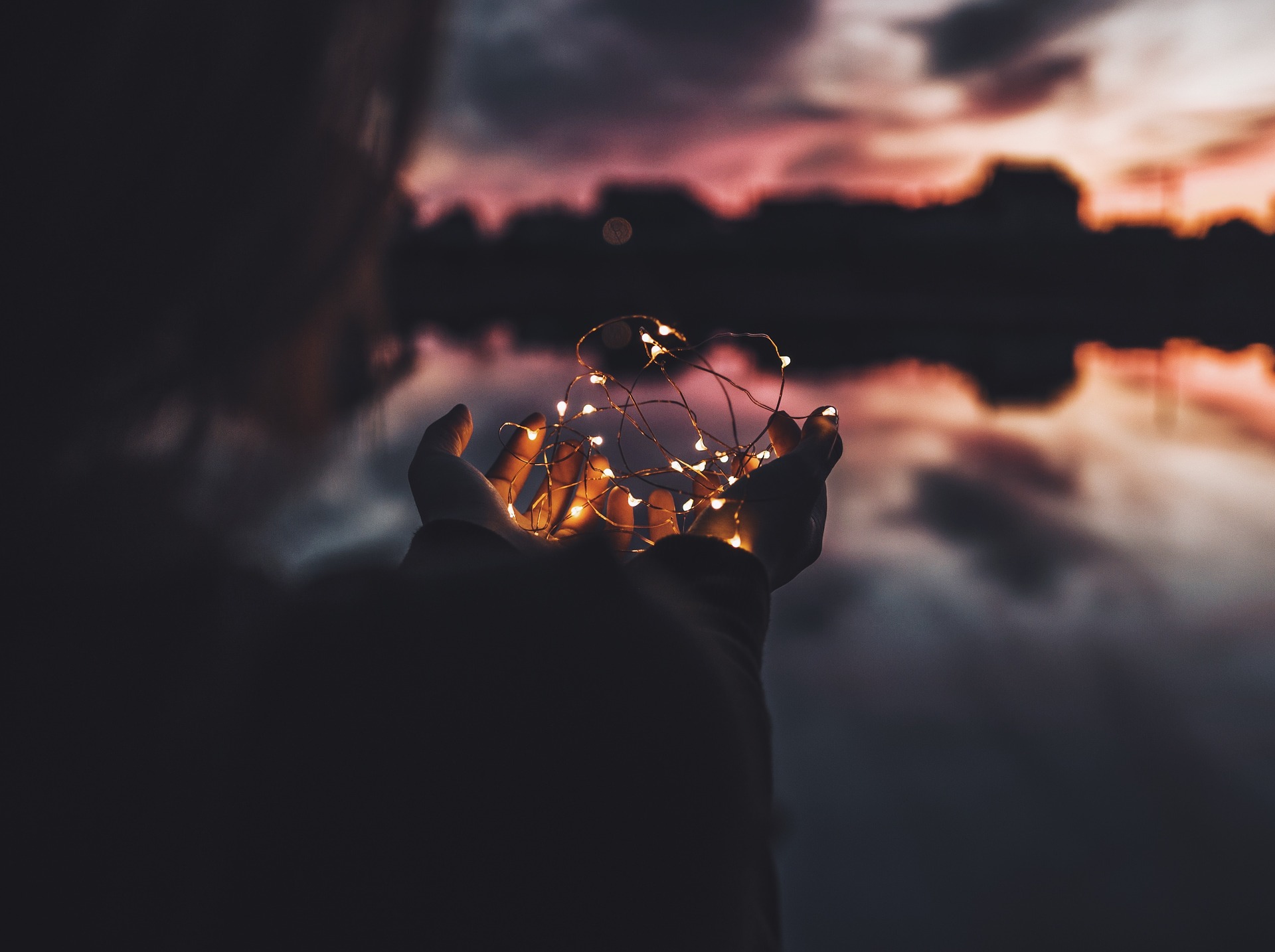
Great photos, very evocative and beautiful. I follow you on Twitter also and see that you deleted the tweet about this blog post. Hope to find a mention of it on Twitter again.
Thank you! It’s back up. Sometimes, the sharing out can be wonky. I appreciate your kind support!
As one who has frequently found himself alone, and sometimes ten miles away from any artificial place, I find this post, juxtaposing exhilaration and fear, quite familiar. I have never been unsafe-then again, I’ve never followed a Grizzly bear to its lair.
Everyone is alone sometime. As such…being alone is a shared experience which we all have together.
Lovely post. I love moments of being alone, especially with nature. There is a connection to the world around us that keeps us from the feeling of loneliness during these times. If we could keep hold of that connection, I have to wonder if we would never feel lonely.
Very nice picture
I find that the modern psyche is afraid to look closely at the internal landscape as well as the external wild spaces. Perhaps the children are too managed and have not developed the appreciation of a place where the external stimulation is not fast and furious like a video game… Perhaps we need to teach deep thinking and meditation.
Thank you for following.
The photos and the post have inspired a photo safari (what I call my photo excursions) for me: try to capture the sublimity of romancing the alone (that you’ve done in nature) in an urban setting. I don’t know that it’s possible, but it will be a fun expedition. Thanks for the “assignment!”
That’s wonderful! Please share the link when you post so I don’t miss it somehow!!
I will do that. It might be a while before I go on my photo safari because it is still hot as blue blazes here (Houston, TX), but I will definitely let you know when I post them.
Thank you so much for connecting with my blog. I loved this post as I can identify so well with much of what you wrote. Being the eldest of four girls I was always seeking an escape from the family as a child. I even had a tree in our garden that I claimed as my own and would spend time in its top branches savouring the solitude. When I was old enough to take walks alone, I relished the same things you wrote about. The huge trees shading the quiet road to the beach and the wide expanse of the sea viewed from a deserted cliff made me feel small but not insignificant. I was in awe of them and felt special and privileged to experience such wonders alone. Two of my five children are very like me and I am amazed at how well we all fit the profile of this post. The youngest is in art college and the older one creates abstract scenes of natural landscapes. He usually places a tiny figure somewhere in the painting. Sorry for such a long comment , I hope you can see from it why your post really struck a chord with me. Looking forward to reading more of your writing.
Wow! You’ve given me the highest compliment. Thank you for sharing your experiences, and kudos to you for encouraging your children’s artistic personalities. How lovely to share similar interests with ones you love so much! 😊🙌
Beautifully written, wonderful images. Yet another of your posts that touches the inner me…
Gosh, you’re so incredibly kind. I’m so glad we can connect on similar things.
Well deserved!
Thank you so much for connecting with my blog, I have read and visited some of your posts and find that I really enjoy both your writing and your beautiful photography. I too treasure time alone and nature is what inspires me most, walking among long blades of grasses or heather, or just watching the sun rise in the mornings, all very calming and beautiful. Kind regards.